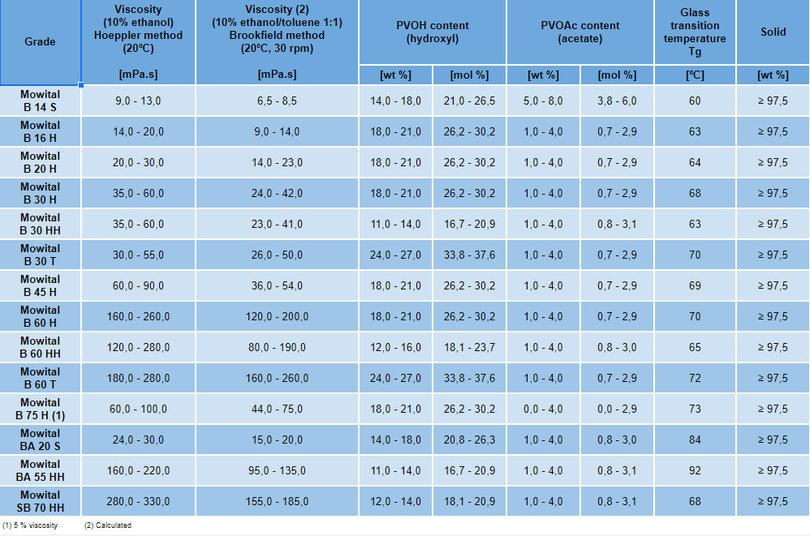KURARAY MOWITAL™
The material for thousand applications
Applications' guide
Nomenclature
Technical data
SEPPIC distributes the MOWITAL™ range of KURARAY in France.
The material for thousand applications
Under the brand name MOWITALTM, Kuraray produces polyvinyl butyral resins (PVB) whose properties are characterized by the presence of butyral-, hydroxyl-, and acetyl-groups.
With excellent adhesive and film-forming properties, strong binding power and outstanding optical transparency, polyvinyl butyral are utmost versatile thermoplastics, used today in many applications: inter-layers for safety glass, paints, lacquers and varnishes (e.g. primers for metals and anti-corrosion paints), printings inks, temporary binders and adhesives.
- Compatible with many polymers, MOWITALTM enables ideal crosslinking of various functional groupe of organic substances.
- The PVB is ideal for use with a wide range of solvents - from non-polar solvents like hydrocarbons to highly polar solvents like methanol.
- MOWITALTM is available in variants with different viscosities, from low to high viscous grades.
Applications’ guide of MOWITALTM
Nomenclature of MOWITALTM
MOWITALTM B 20 H
- The alphabetical prefix B, BA and SB points to the type of functionalization of the polymeric backbone, B for acetalization with butyraldehyde, BA for co-acetalization with butyraldehyde and acetaldehyde, and SB for acetalyzation with butyraldehyde with additional specification. These 3 families of grades are available as powders. A selection of grades are also available in granular form under the name MOWITALTM G (please consult us).
- The numbers 14, 16, 20, 30, 45, 55, 60, 70 and 75 contained in the type designation for MOWITALTM are relative measures indicating the increasing degree of polymerization or molar mass and thus the rising solution viscosity.
- The alphabetical suffix T, H, S, HH points to the increasing degree of acetalization, which indicates on one side a decreasing polarity of the polymer, Tg and tensile strength, and on the other side an increasing water resistance, solubility in non-polar solvents, compatibility with non polar polymers and elongation properties.
Technical data of PVB

Would you like a sample of this ingredient ?
Request
